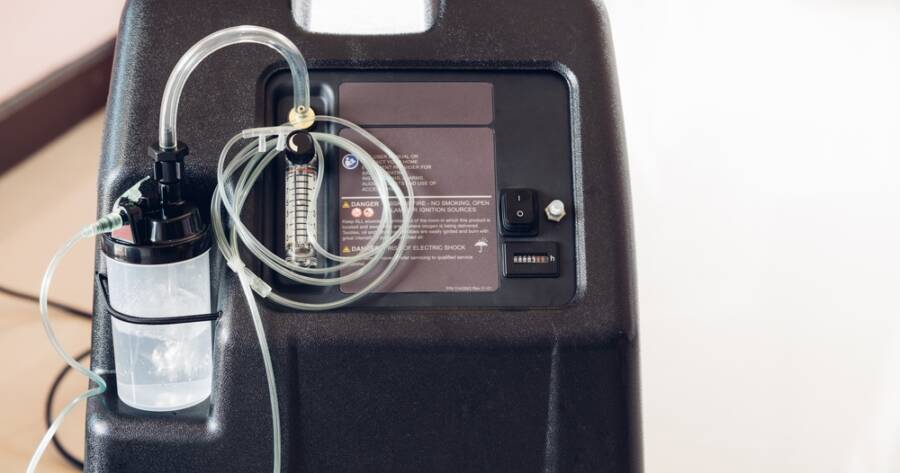Living with Chronic Obstructive Pulmonary Disease (COPD) often means managing symptoms that impact your daily life. For many individuals, an oxygen concentrator can make breathing easier and improve quality of life. However, obtaining such equipment can be a costly endeavor. Thankfully, Medicare may help cover the costs of an oxygen concentrator for those who meet specific conditions. Get to know the steps to secure Medicare assistance and make the process more manageable.
Understanding Oxygen Concentrators and Their Role in COPD
Oxygen concentrators are medical devices designed to deliver concentrated oxygen to individuals who have difficulty maintaining adequate oxygen levels on their own. For those with COPD, supplemental oxygen therapy can alleviate breathlessness, improve stamina, and enhance overall well-being.
Unlike oxygen tanks, concentrators draw air from the environment, making them more convenient for long-term use. Medicare often recognizes the importance of oxygen therapy for qualifying individuals. However, eligibility hinges on specific medical and documentation requirements. Understanding these prerequisites can help streamline the process.
What Medicare Covers for Oxygen Therapy
Medicare provides coverage for oxygen therapy under Part B, which includes durable medical equipment (DME). This means that an oxygen concentrator may be partially or fully covered if your healthcare provider deems it medically necessary. However, it is important to understand that coverage is subject to conditions.
To qualify for coverage:
- Your doctor must document that you have a significant lung disease, such as COPD, and that alternative treatments have not sufficiently improved your condition.
- Specific oxygen saturation levels (measured via arterial blood gas or pulse oximetry tests) must meet Medicare’s criteria.
- A detailed written prescription from your doctor is required, specifying the type and duration of oxygen therapy.
Even with Medicare assistance, some out-of-pocket costs, such as deductibles or co-insurance, may still apply. Beneficiaries with additional coverage, such as Medicaid or supplemental insurance, might see reduced costs.
Steps to Obtain an Oxygen Concentrator Through Medicare
Navigating Medicare’s requirements can seem complex, but breaking the process into manageable steps can simplify your journey:
1. Consult Your Doctor
The first step is to schedule a visit with your healthcare provider. Your doctor will assess your condition, review your symptoms, and perform necessary tests to determine whether oxygen therapy is appropriate. Clear communication about your breathing challenges and daily limitations can support a more accurate diagnosis.
2. Complete Required Testing
Medicare mandates that specific tests, such as blood gas analysis or oximetry, confirm your need for oxygen therapy. These tests are usually conducted in a medical setting and will measure the oxygen levels in your blood under resting or exertional conditions.
3. Obtain a Prescription
If you meet the criteria, your doctor will issue a prescription for oxygen therapy. This prescription must include detailed information, such as the flow rate of oxygen you require and the duration of use. Ensure that this documentation aligns with Medicare’s standards.
4. Work With an Approved Supplier
Medicare only covers equipment obtained through enrolled DME suppliers. Use Medicare’s online supplier directory to identify authorized providers in your area. Be sure to verify that the supplier is in-network if you have a Medicare Advantage Plan.
5. Understand Your Costs
Before committing to a supplier, ask for a breakdown of costs. Even with Medicare coverage, you may face co-insurance, monthly rental fees, or other expenses. Understanding these financial obligations upfront can help you plan accordingly.
Tips for a Smoother Application Process
The process of securing an oxygen concentrator through Medicare can take time. Here are some tips to ensure a smoother experience:
- Keep detailed records: Maintain copies of all prescriptions, test results, and correspondence with Medicare or suppliers. This can help resolve disputes or delays.
- Follow up regularly: Check on the status of your application and equipment delivery to avoid unnecessary waiting.
- Ask about alternatives: If Medicare denies your request, you can appeal the decision or explore other assistance programs, such as nonprofit organizations or manufacturer discounts.
Alternatives If You Don’t Qualify for Medicare Assistance
Not everyone will meet Medicare’s criteria for oxygen therapy coverage. If you’re denied assistance, consider these options:
- Medicaid: Individuals with low income may qualify for Medicaid, which could cover oxygen equipment in some cases.
- Financial aid programs: Some nonprofit organizations provide grants or discounted devices for those in need.
- Out-of-pocket purchase: Purchasing an oxygen concentrator outright may be an option, and some suppliers offer payment plans.
Exploring these avenues can help ensure that you receive the necessary care and equipment, even if Medicare assistance isn’t available.
Learn More Today!
Obtaining an oxygen concentrator for COPD with Medicare assistance is a process that requires careful preparation, documentation, and adherence to specific guidelines. By consulting your doctor, completing required tests, and working with an approved supplier, you can maximize your chances of receiving coverage.
While Medicare’s criteria may feel daunting, alternative resources are available to ensure you get the support you need. Taking proactive steps today can lead to improved breathing and a better quality of life tomorrow.
